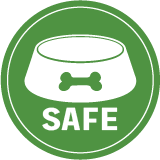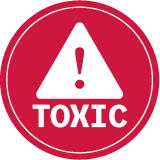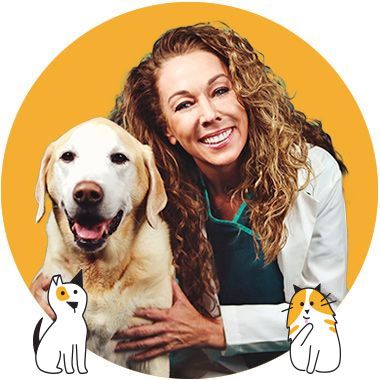Can Trigger Blindness, so Please Don't Ignore
Often characterized by vets as urgent but it's smart to know when urgent turns into an emergency, so you don't waste time when moments can define whether or not your pet loses her vision, or her eye. Plus, this simple trick can be a godsend as a quick prevention tool.

STORY AT-A-GLANCE
- Eye infections are very common in dogs and cats, and can range from very mild and self-limiting, to extremely serious
- Indoor-only cats have far fewer eye infections than outdoor cats and dogs; in most cases, if your kitty’s eye problem doesn’t resolve on its own in a day or two, you should make an appointment with your veterinarian
- Symptoms of an eye infection are similar in dogs and cats, and can include redness, irritation, squinting and pawing at the eyes
- Since dogs are more likely to get eye infections, a good prevention tip is to wipe your dog’s face with a damp cloth as often as necessary to remove allergens, dust and other irritants that can lead to an eye problem
- There are other eye conditions that can mimic an infection, so if your pet’s eye problem doesn’t resolve within a day or two, again, it’s important to make an appointment to have him seen by your veterinarian
Editor's Note: This article is a reprint. It was originally published September 30, 2018.
Eye problems are one of the most common reasons dogs and cats wind up at the veterinarian's office. Some eye infections are harmless and self-limiting, meaning the body takes care of the problem itself. At the other end of the spectrum are eye infections that are very serious, causing permanent damage, including blindness or the loss of an eye. Many infections fall somewhere in between those two extremes.
How Serious Is Your Pet’s Eye Problem?
Veterinarians categorize eye infections as urgent. Most are not a true emergency, unless there's been trauma to the eye or sudden bulging, in which case your pet should be seen by your regular veterinarian or at an emergency animal clinic immediately.
Generally speaking, you can consider your pet’s eye infection urgent if there are obvious changes to the eye that grow progressively worse to the point where you're concerned. If your dog’s or cat's quality of life is suffering due to an eye problem, it's another sign the situation is urgent.
For example, if yesterday you noticed your cat blinking frequently, and today he's not opening one of his eyes at all, it's time for you to call the veterinarian for an appointment as soon as possible.
Eye Infections in Cats
Cats don't have as many eye problems as dogs, because many kitties live their lives indoors, which dramatically reduces the likelihood of injuring an eye or being exposed to infection. Outdoor cats, however, have about the same risk level as dogs. The feline herpes virus is usually the cause of viral eye infections in kitties. If your cat is exposed to the virus, chances are she'll never completely clear it from her body. She may have intermittent flare-ups for the rest of her life brought on by stress.
Because feline herpes virus is a stress-induced condition, cats with optimally functioning immune systems can effectively suppress the virus. But if your kitty’s immune system is weakened for any reason and she encounters a stressful situation, a viral outbreak can result, causing redness, irritation and inflammation of the eyes. It could also lead to a secondary bacterial infection.
Cats can also develop primary bacterial eye infections caused, for example, by chlamydia, as well as fungal infections like cryptococcus.
When to Call the Vet, and Prevention Tips
If your kitty’s eye infection isn't resolving on its own after a few days, it's important for your veterinarian to identify the cause so it can be treated correctly. This is very important, because viral, bacterial and fungal infections are managed very differently. There's no single medication your vet can prescribe that will treat everything.
Symptoms of an eye infection in your cat can be tricky to detect, because kitties are masters at hiding discomfort, no matter the cause. You may notice her slowly blinking her eyes, or holding one eye closed, or pawing at them. You might also see some redness, which can be a sign of a condition known as conjunctivitis. Sometimes, there can be discharge and crusting around the eyes as well.
The best way to keep your cat safe from all types of eye infections is to keep her indoors and only allow her outside for leash walks or in a secured area like a catio, where she can be safe while outside. You can reduce your pet's risk of acquiring an eye infection by at least 80% simply by never allowing her to roam free outdoors.
Eye Infections in Dogs
Viruses, bacteria and fungi also cause eye infections in dogs, as well as Lyme disease. Canine eye infections are either acute or recurrent. An acute eye infection means your dog was fine yesterday, but today he's squinting, or his eyes are red and irritated, or he’s pawing at them or rubbing his head along the couch or on the floor.
Unlike cats, dogs are more likely to let us know there’s a problem as they try to self-soothe to relieve the discomfort. If your dog is really rubbing or pawing at his eyes, you should consider an E-collar to prevent him from doing permanent damage before the situation either resolves on its own in a day or two, or you get him to the veterinarian for diagnosis and appropriate treatment.
Symptoms of an eye infection are similar in dogs and cats. Many dogs will have a green or yellowish discharge from an infected eye, which is a definite sign of a problem. Certain breeds known for tear staining are predisposed to recurrent eye infections, including the Lhasa Apso, the Shih Tzu and the Maltese.
Helping Your Dog Avoid Eye Problems
If your dog has long hair around his eyes, ask the groomer to clip it short, or you can trim it yourself. This will help prevent the hair from matting in the corners and will also reduce moisture build-up, both of which can set the stage for a secondary eye infection.
When your dog is outside, he's exposed to allergens that he can also bring indoors on his fur and paws. Ragweed and pollen can get into your pet’s eyes and cause inflammation leading to a secondary bacterial infection. Keeping your pup’s face clean is a good way to minimize the microscopic bits of debris that collect on his face. Wipe gently with a damp cloth to remove allergens, dust and other irritants that can lead to an eye problem.
If your dog's eyes tend to tear a lot, it's important to remove the salt and gunk that collects in the moist crevices in the corners of his eyes, as this is also a set-up for a secondary eye infection. Making sure your dog doesn't stick his head out the car window when you’re traveling with him is also an important step in reducing the risk of eye injury or infection.
If your dog digs and burrows in your yard or when you take him on walks or hikes, he’s at risk of getting dust, mulch, grass and other irritants from the soil in his eyes. Any foreign object, no matter how small, that winds up in your pet's eyes creates a potential problem. Again, keeping your pet’s face clean by wiping with a soft, damp cloth after he’s been outdoors can go a long way toward eliminating the irritants that can result in infection.
Never use Visine or other human eye drops in your pet’s eyes unless you've cleared it with your veterinarian. You can use plain contact lens solution, which is also called eye-irrigating solution, to rinse the eyes, but avoid all chemical-based drops sold for human use, as they're not only inappropriate for pets, but can actually do more damage. You can use pure colloidal silver from your local health food store on a clean cloth to safely disinfect around your pet’s eyes.
Other Conditions That Can Mimic Eye Infections in Pets
Other conditions of the eye that can mimic an eye infection include glaucoma, corneal ulcers, dry eye, cherry eye, entropion (the eyelids roll inward and can irritate the eye) and uveitis, an autoimmune condition.
If you notice a change in your pet’s eyes that doesn't resolve on its own in a day or two, make an appointment for your dog or cat to be seen by your veterinarian or a veterinary ophthalmologist to determine the cause of the problem and the right course of treatment. If your dog or kitty is prone to recurrent eye infections, talk with your integrative veterinarian about homeopathic, herbal and nutraceutical preventives that can help manage the health of your pet’s eyes.











